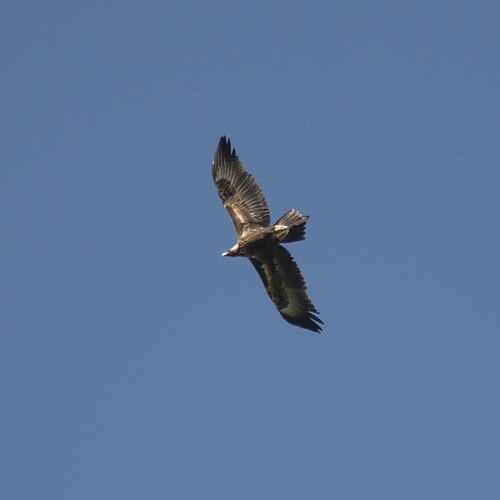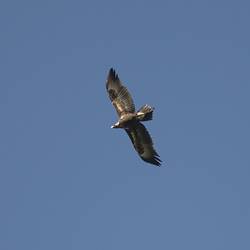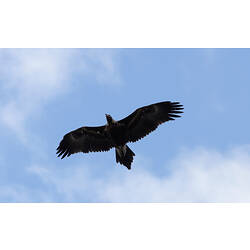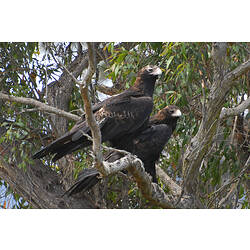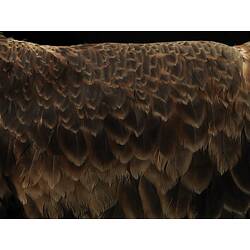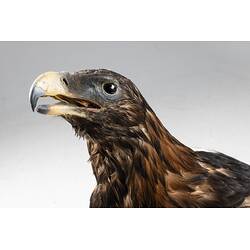General Description
Body dark brown with wings and neck paler (adult) or paler with gold sheen (young birds). Feathers extend all the way down the legs. Characteristic tail is long and diamond-shaped, looking like a wedge when seen from below. Wingspan up to 2.3 m. Females are larger and heavier (over 5 kg) than males (up to 4 kg). Body length up to 105 cm.
Biology
Wedge-tailed Eagles are Australia's largest eagle. They can travel long distances and often circle in thermal air currents. They feed on live prey or dead carcasses (carrion), with rabbits and hares comprising most of their diet. Wedge-tailed Eagles hunt by themselves, in pairs, or in a group. Individuals can lift up to 50% of their body weight and will store food in branches close to their nests. Nests are constructed from dead sticks lined with eucalypt leaves and are located high in trees. Nests are reused each year and can weigh up to 400 kg. Wedge-tailed Eagles are monogamous and will lay clutches containing one to three eggs. Breeding pairs are extremely territorial of their nest sites.
Distribution
Southern New Guinea. Mainland Australia and Tasmania.
Habitat
Inhabits most areas, but prefers open country and forested or wooded areas. Occasionally in urban areas.
More Information
-
Animal Type
-
Animal SubType
-
Brief Id
Long wedge or rhombus-shaped tail and feathers on legs.
-
Colours
Brown, Black
-
Maximum Size
105 cm
-
Habitats
Wetland, Urban, DryForest, WetForest, Woodland, Mallee, Grassland
-
Diet
Carnivore
-
Endemicity
-
Commercial
No
-
Conservation Statuses
CITES: Trade restrictions (Appendix II), FFG Threatened List: Not listed, EPBC Act 1999: Not listed, IUCN Red List: Least Concern
-
Taxon Name
-
Common Name
Wedge-tailed Eagle
-
Kingdom
-
Phylum
-
Subphylum
-
Class
-
Order
-
Family
-
Genus
-
Species Name
audax
